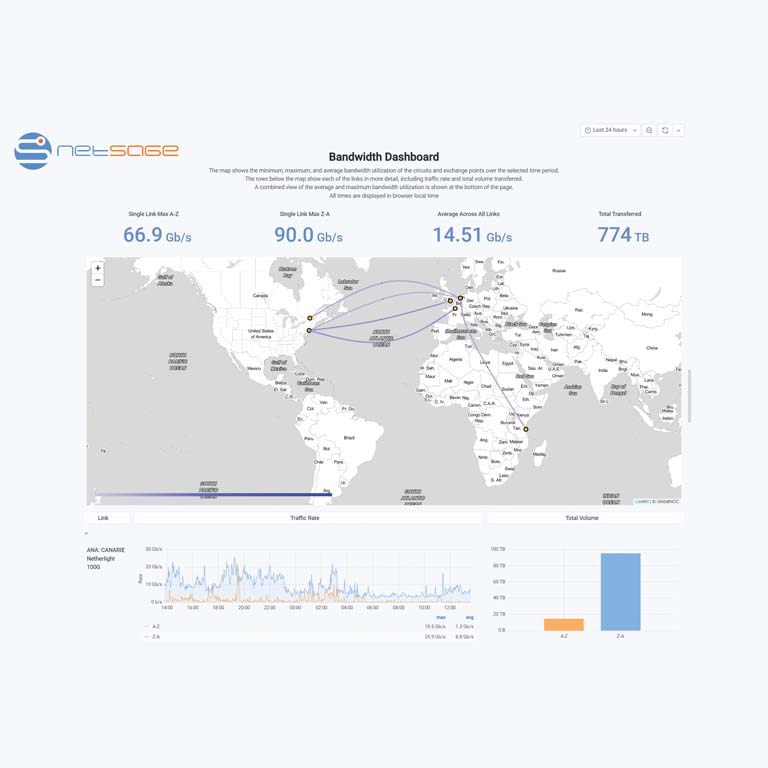2021 Initiatives
Building international partnerships
Building on more than 20 years of history, in 2021 TransPAC was the lead organization to coordinate and collaborate with network providers throughout Asia to better plan, deploy, and support international Research and Education connectivity and networking services.
- The Asia Pacific Oceania network (APOnet) collaboration involves organizations from six countries, and includes:
- Australia’s Academic and Research Network (AARNet)
- Arterial Research and Educational Network
- in Asia-Pacific (ARENA-PAC)
- Hong Kong Academic and Research Network (HARNET)
- Internet2
- Korea Institute of Science and Technology Information (KISTI)
- National Institute of Information and Communications Technology (NICT)
- National Institute of Informatics (NII)
- Pacific Wave
- Research and Education Advanced Network New Zealand (REANNZ)
- Singapore Advanced Research and Education Network (SingAREN)
- TransPAC
- University of Hawaii (UH)

The APOnet collaboration enables large-scale scientific workflows to accelerate discovery in all areas of science and engineering, from high-energy physics to earth sciences, from astronomy and astrophysics to biology and biomedical engineering.
“The new Asia Pacific Oceania network (APOnet) builds on our decades of experience in this realm, and I’m confident it will enable even more multidisciplinary discoveries as teams of experts will be able to collaborate and share data and scientific instruments across national boundaries,” said Dr. Jennifer Schopf, director of International Networks at Indiana University and lead coordinator for APOnet. “We at IU are thrilled to get started on the important work of APOnet, and to see where our new, formalized partnership leads—and how it will benefit humankind.”
One collaboration that came out of APOnet is the Guam–Singapore Connectivity Consortium, which now supports a 15-year connection between Guam and Singapore, adding much needed redundancy to the region.
The Guam-Singapore consortium—IN@IU, Internet2, University of Hawaii, University of Guam, AARNet, ARENA-PAC, and SingAREN—was made possible in part because of their previous work with APOnet. Through that effort, a missing component of the global research and education networking infrastructure was identified and joint support could be established to address it.
Understanding international data transfers
For a global network to be truly beneficial to researchers and scientists, we need a deep understanding of how the network is being used. That’s why in 2021 our team expanded the use of NetSage significantly for not only the IN@IU supported networks, but over a dozen partner networks as well.
NetSage is a network measurement, analysis, and visualization service created by the IN@IU team and widely deployed on both international and domestic networks.
For example, as part of the Networks for European, American, African, and Arctic Research (NEA3R) project, the team expanded the NetSage deployment to include data about near real-time traffic rates, large data flows over the connections, and how projects are using the networks. This enables IN@IU and their NEA3R partners to ensure that scientific workflows are operating effectively and to work with data senders when they’re not.

Moving data faster, one route at a time
2021 also saw the formalization of the Routing Working Group, a cross-national effort to address and troubleshoot routing anomalies as a community and to provide resources for troubleshooting, such as NetSage, Route Views, peeringDB, and router proxies.
Co-chaired by IN@IU, the Routing Working Group has solved cases related to asymmetric and inefficient routing, incorrect adjustments to routes due to new international links, and addressed instances when R&E traffic used a commodity route instead of the more efficient available R&E networks. The Routing Working Group includes nearly 150 members from over 20 countries.
